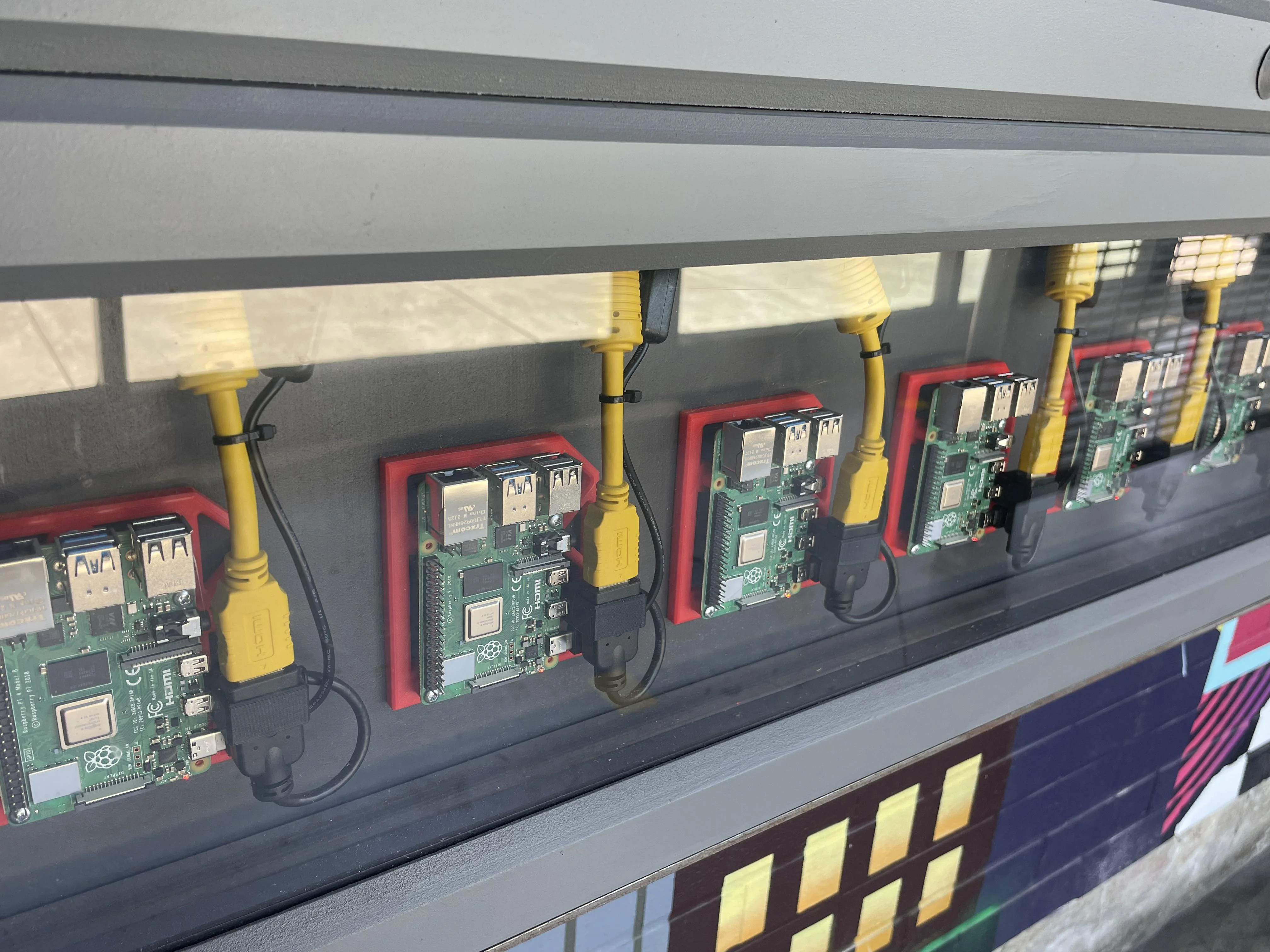Six Raspberry Pi 4's Power Sci-Fi-Themed Chinese Take-Out Signage
Raspberry Pi...to go!
The Rice Box, a "Chinese take-out on the go," is a blur of Cyberpunk neon and sci-fi-influenced kiosks. Kiosks which are powered by six Raspberry Pi 4s. As spotted by Reddit user Paimonforsale, the kiosk resembles a 1990s sci-fi set, but six Raspberry Pi 4 are hidden in plain sight.
Putting raspberry Pi’s to work and showing them off from r/raspberry_pi
Located at the corner of Morningside Drive and Times Boulevard in Houston, Texas, The Rice Box is a recent addition to the area. It seems that the owners have a love for sci-fi, and the six Raspberry Pis are used to create a digital signage solution and given a prominent place in the display. Perhaps they are also fans of our favorite single-board computer?


Each of the Raspberry Pi's uses just one micro-HDMI output, and looking at the layout of the prop signage, we can see six screens. The most prominent are the three large screens showing the menu. Just above those screens are three more that seem to be there for set dressing, with sci-fi themed animations.
The Raspberry Pi 4 is protected behind a glass or plexiglass screen. How theft-proof they are remains to be seen. Each of the Raspberry Pi is mounted to a red frame. Each frame has telltale signs of 3D printing, with the top layer exposing the lines of filament. You could easily make these frames with any of the best 3D printers, or even a laser cutter. The PIs are powered using their USB C power supply, but that is it; no GPIO pins are used, nor are any of the USB ports. This means the many buttons and switches on the signage are mere set dressing. A real shame, as it would've been fun to have some sounds/lights react to user input.
The code to run the signage is unknown. It could be something custom using Raspberry Pi OS and a little Python. Most likely, it is something like DAKBoard, Screenly, or FullPageOS, which uses a Chromium browser in kiosk mode to display a web page. Using six Raspberry Pi 4s for six displays seems a little "overkill." The Raspberry Pi 4 introduced dual micro HDMI ports, each capable of outputting a 4K30 signal. Could these digital signage OS output to both HDMI ports at once? A quick glance at each of the features doesn't indicate that it is possible. But as they are based on Raspberry Pi OS / Linux, it wouldn't be too difficult to hack the feature into it.
Raspberry Pi have been used for digital signage since the board was released. The low cost and easy access (at the time) made it an obvious choice for signage makers. Even IKEA uses Raspberry Pi in its store signage. The Rice Box's overall build is impressive and exudes a Blade Runner aesthetic. Heck, we expected Rick Deckard to be ordering noodles in a neon rain-soaked world.
Get Tom's Hardware's best news and in-depth reviews, straight to your inbox.

Les Pounder is an associate editor at Tom's Hardware. He is a creative technologist and for seven years has created projects to educate and inspire minds both young and old. He has worked with the Raspberry Pi Foundation to write and deliver their teacher training program "Picademy".
-
Findecanor Showing the Raspberry Pis behind glass is only to gloat: "We got Raspberry Pi 4's, and you don't".Reply
If I was there in person. they would make me choose another restaurant. -
bit_user ReplyThe Raspberry Pi 4 introduced dual micro HDMI ports, each capable of outputting a 4K30 signal.
I'm pretty sure a recent driver update managed to squeeze out dual 4k60, but I'm not sure what sorts of tradeoffs might come from using it. -
Howardohyea Reply
When did that happen? My impressions is it’s still 4k60 over one HDMI. If I have to guess the trade off is dropping support for some legacy HDMI featuresbit_user said:I'm pretty sure a recent driver update managed to squeeze out dual 4k60, but I'm not sure what sorts of tradeoffs might come from using it. -
bit_user Reply
I don't know if it's single or dual 4k60, but this is probably what I read:Howardohyea said:When did that happen? My impressions is it’s still 4k60 over one HDMI. If I have to guess the trade off is dropping support for some legacy HDMI features
https://www.phoronix.com/news/Linux-6.2-Raspberry-Pi-4K
I just updated my Pi, to see what the current kernel is. The last time I updated it was a couple months ago. It jumped from 5.15.84 to 6.1.21! I wouldn't hazard a guess about when they'll take the >= 6.2 kernel, but it might not be that long. Otherwise, you'll have to manually find and install (or build your own) kernel to get those patches.